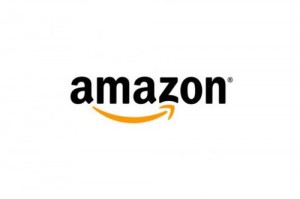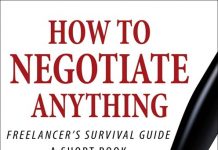 I saw several articles in my newsfeed this morning about Amazon’s new textbook creation software. Most of them were simply a factual write-up of the situation—people don’t seem to care all that much about textbooks, so there was less hand-writing about this than usual—but still, I was surprised by the wounded tone some tech journalists seem to take in Amazon-related stories.
I saw several articles in my newsfeed this morning about Amazon’s new textbook creation software. Most of them were simply a factual write-up of the situation—people don’t seem to care all that much about textbooks, so there was less hand-writing about this than usual—but still, I was surprised by the wounded tone some tech journalists seem to take in Amazon-related stories.
Amazon is disrupting the industry. Amazon is taking over the world. This new piece of news, whatever it might be, shows Amazon throwing its might at yet another poor, beleaguered media provider…you know the rhetoric I mean. But here is my question. Why do people continue to be surprised by Amazon?
This is the part I don’t understand: Amazon has a pattern. They identify a perceived gap in the market, try to fill that gap, and everyone who works in that segment of the market, who knew that a) there was no Amazon yet so b) when Amazon realized it, they would try to get in is shocked and appalled and dismayed.
Why is nobody being more proactive here? Why is nobody else trying to predict what Amazon is going to do? I think some of these ‘disruptions’ Amazon created might have been less ‘disruptive’ if that market segment had actually been well-done in the first place.
It reminds me of when Amazon first came to Canada, and the Chapters people got all up in arms about the evil Americans coming in to tale their business. What they overlooked in all of the hand-wringing was that people were not shopping at Amazon because they liked America better. They were doing it because Amazon had the better website. If Chapters had the better website, people would have been happy to shop there. More recently, everyone was stunned by Target’s disastrous attempt to enter the Canadian market. They naively thought that people would just accept stores with poorer choice and higher prices. Almost 80% of the country lives within a two-hour drive of the border. I can be in Buffalo in less time than it would take to the farther reaches of my own metropolitan area. How could they really think people would not KNOW there are better choices?
If Amazon enters your market with a better way to do things, of course they will gain market share. The way to protect yourself from that is to never rest on your laurels. You need to anticipate. You need to look at the gaps in your services that Amazon might try to win people over by filling, and create that product yourself. That’s how Scribd has stayed ahead of Kindle Unlimited. That’s how Apple has stayed ahead of Amazon Music. YOU have to offer a better product than they do.
The mistake is to sit there and think your market is safe the way things are going right now, and not anticipate ways to do it better. Because if you don’t look for better ways, someone else will. And they will offer those better ways as a product and sell that product to your customers. Why not sell it yourself and beat them to the punch?

































Amazon is hardly being disruptive here.
Apple’s iBooks Author, released almost precisely three years ago ago to the day (January 19, 2012) is intended to create high-school and college-level textbooks —so much so that I’ve been known to gripe that it’s not that good for more text-oriented books like novels.
This app is Amazon’s much belated response.
I looked over Amazon’s guide to to the app, which you can get here:
http://www.amazon.com/Building-Your-Kindle-Direct-Publishing-ebook/dp/B007URVZJ6
It is certainly not “a better way to do things.” In fact, from what I can see, the Kindle Textbook Creator app (KTC) rates about two stars. You write in Word (groan) following a host of pedantic dos and don’ts (you must have spaces at the end of paragraphs), and then output in PDF. Those PDFs then get stitched into a Kindle book by KTC.
In design, that’s known as a kludge: “an ill-assorted collection of parts assembled to fulfill a particular purpose.”
In contrast, Apple’s iBooks Author produces a specialized EPub 3 intended for iBooks. It’s got a clever twist that makes it ideal for textbooks. In landscape mode, the graphics are shown in their full glory. Rotate that iPad to portrait, and the graphics shrink, making the text easier to read and even resizable. For someone doing layout—and that’s one of the ways I make a living—that’s marvelous. You get two book layouts, both quite useful, for the labor of one. Apple’s iBooks Author can do that because ePub can function both as reflowable and fixed layout. That’s probably what lies at the heart of that magic.
Will KTC create anything that clever? Since it’s working with PDFs, probably not. In fact, since the basic components are PDFs, rotation could result in something looking awful. (By definition, PDF doesn’t flow.) Someone might want to play with the app, create an ebook, and report back. You can get the app here.
https://kdp.amazon.com/how-to-publish-educational-content?ref_=GS
—-
What Steve Jobs said about the Microsoft of long ago (it has improved)—that it showed no interest in creating attractive products—holds true for today’s Amazon.
Somehow, Amazon doesn’t get that ebooks should be complex and beautiful rather than look like something on a circa-2000 Palm. Indeed, I’m constantly astonished that Amazon, which has been in books since its beginning, still doesn’t understand the book trade. It hasn’t moved past the limited mindset of a cut-rate book retailer—one grown to an enormously bloated size. It grips about prices, just as one of those would do, and it attempts to bully publishers and starve authors, just like them.
You see that in one of Amazon’s more infuriating moves. Apple, located in distant California, helped Adobe, whose InDesign team is in Seattle, give InDesign-CC top notch fixed and reflowable EPub export abilities. Amazon, whose huge headquarters complex in South Lake Union is but a ten-minute drive from that InDesign team, refused to give them any help with its messy, complex, proprietary KF8 format. To those working on the most powerful publishing tool in existence Amazon said, “Go pound sand” or words to that effect.
Since a host of publishers and some authors create print versions with top-of-the-line InDesign and can now create EPub versions from the same document, that leaves Amazon as the jerk who wants to make life hard for publishers and authors.
When I queried Kindle help about how I could create fixed-format documents (very important for textbooks) for Kindles, do you know what they told me? Hire a third party company. With Apple I can create a digital textbook that looks just like the print version in about two minutes. With Amazon, I’ll be lucky if I can create the same for Kindles for under $2000.
What did Amazon do instead of assisting the InDesign team? It created this pitifully poor, in-house beta app that uses a gosh-awful workflow to get what is likely to be a dreadful result. That’s a Word-to-PDF-to-Kindle-to-Amazon-proprietary patchwork. It’s probably better than nothing, but just barely.
Heck, this KTC is so dreadful, unless there’s something I don’t know about, it doesn’t even let you create print books for Amazon’s own Createspace and Kindles at the same time. Amazon is sticking authors with the time-wasting miseries of two different workflows. They have to edit in two apps, layout in two, proof in two, and revise in two. In publishing that is the ultimate no-no. Like I’ve said repeatedly, Amazon doesn’t know nor does it care to know publishing.
——-
Some of us, sweet Joanna, are not surprised by Amazon. We’re disgusted by it.
We’re disgusted by its tastelessness, by is abuse of the DOJ to get at competitors, by its bullying of publishers, by its cheating of authors when it pays half-the-market-rate royalties, by its refusal to play well with the entire publishing industry including Adobe, and by its assumption that no one in the book universe matters but it.
Don’t confuse attempting to wreck a healthy market with “disrupting” it. There’s nothing surprising about Amazon’s behavior here.
I, too, was nonplussed by the Amazon eTextbook announcement. They haven’t brought anything useful to the table.
However, they have identified an important weakness in self-publishing. That weakness is the dearth of affordable and accessible tools capable of exceeding the capabilities of ePub 2.
There are no ePub 3 capable authoring tools that are affordable and accessible to self-publishing eTextbook authors. Adobe inDesign is simply too expensive and has too steep a learning tool.
That leaves Apple’s iBooks Author as the preeminent eTextbook creation tool for self-publishing. The problem there is that the eTextbooks created with this app are only readable on the iPad and Macs running MacOS X 10.9 or later.